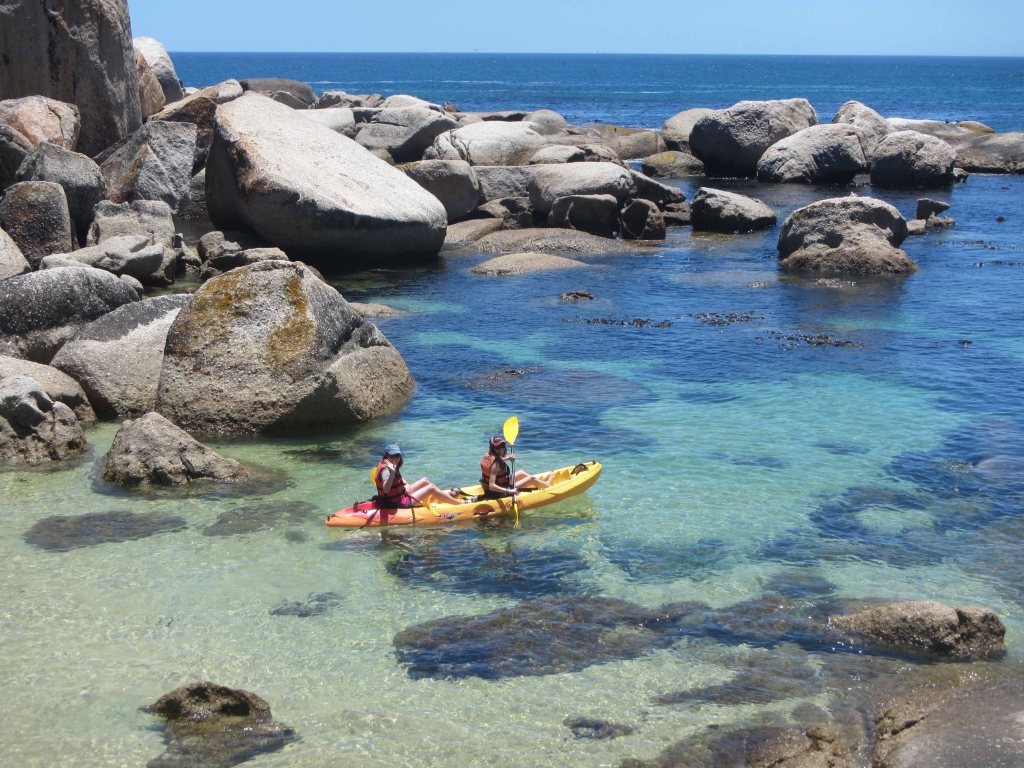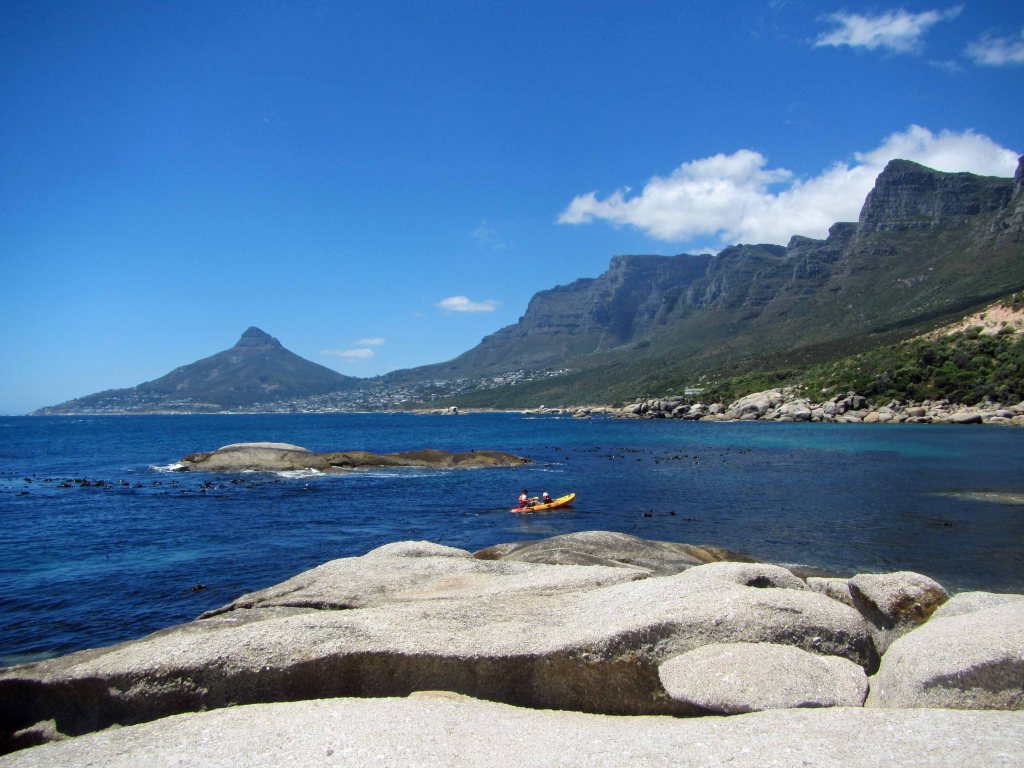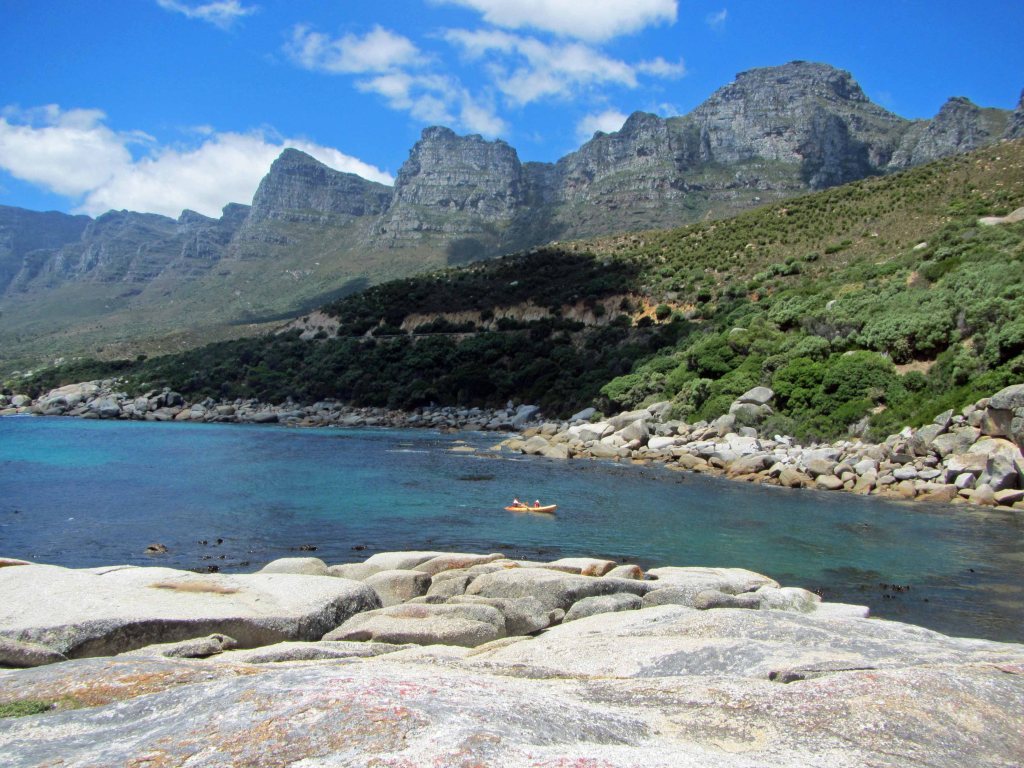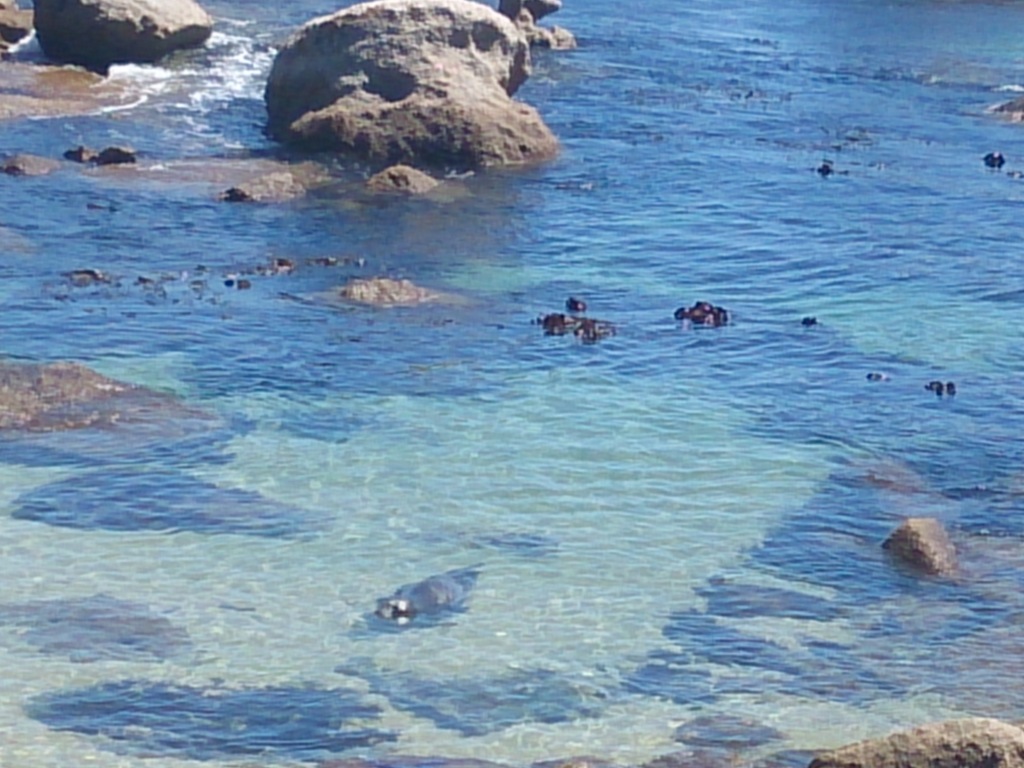
For this week’s post, here’s a picture that I took yesterday during a Sunday afternoon hike with my family. We went for an easy stroll, baby and all, along the Alphen Trail in the Constantia region of Cape Town here in South Africa. My son is 3 months old now, and we’re just starting to go on some easy hikes as a family. The Alphen Trail is more of a walk than a hike, but nevertheless it was nice to spend some proper time outdoors again! In another month or two we hope to embark on some proper hiking.
There is too much vegetation along the Alphen Trail to see much geology, but along one part of the trail I did notice some interesting large granite boulders, which are shown in the above picture. These boulders no doubt belong to the ~550 million year old Cape Granite Suite. Large outcrops or boulders of these granites are commonly seen in the Cape Town area. For example, you can see large granite boulders at some of Cape Town’s beaches. However, I found these Constantia granite boulders interesting due to their weathering. While still quite large, there are clear signs that these boulders are being broken down through weathering. On the right, you can see a nice example of exfoliating granite weathering. On the left, you can see that a large boulder has split in two. In a few parts of the picture, you can see tree roots and other vegetation, which are no doubt contributing to biological weathering of the boulders.
Here’s a close-up view of the exfoliating slab:



































